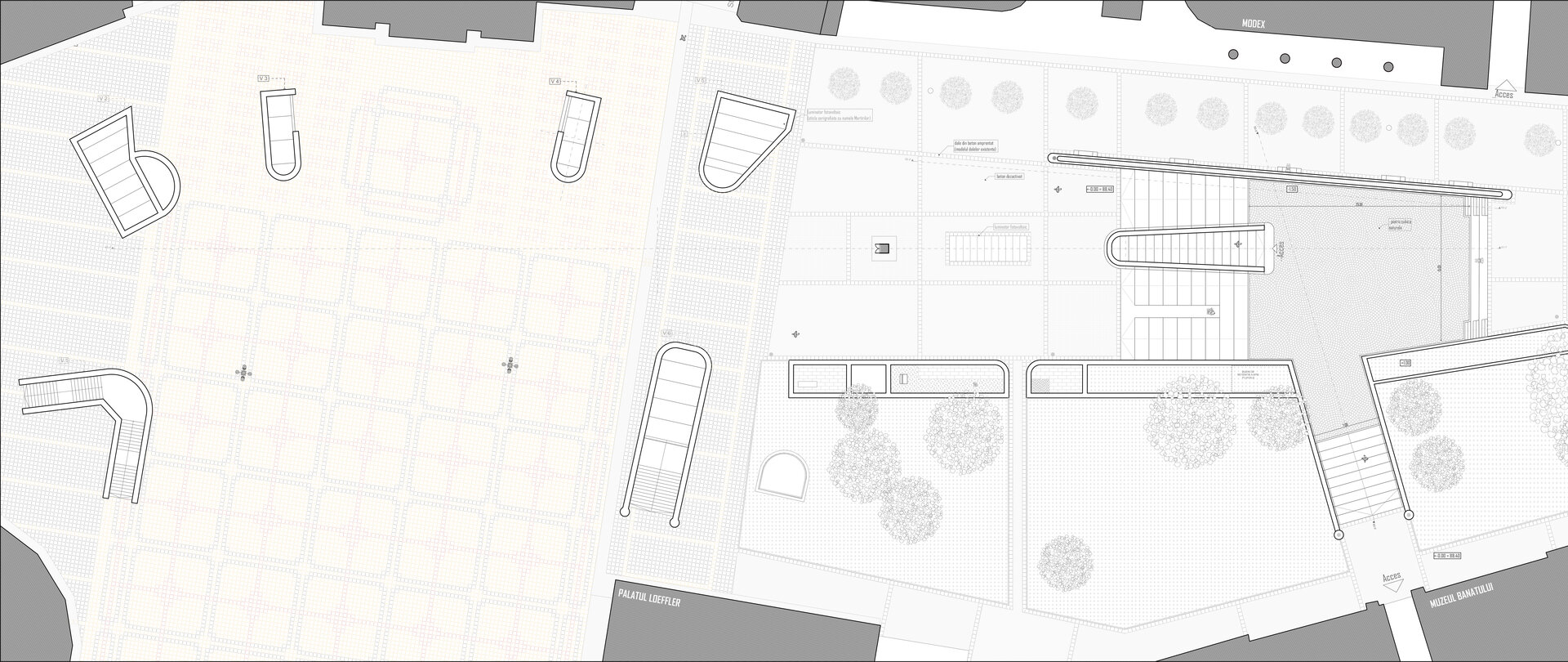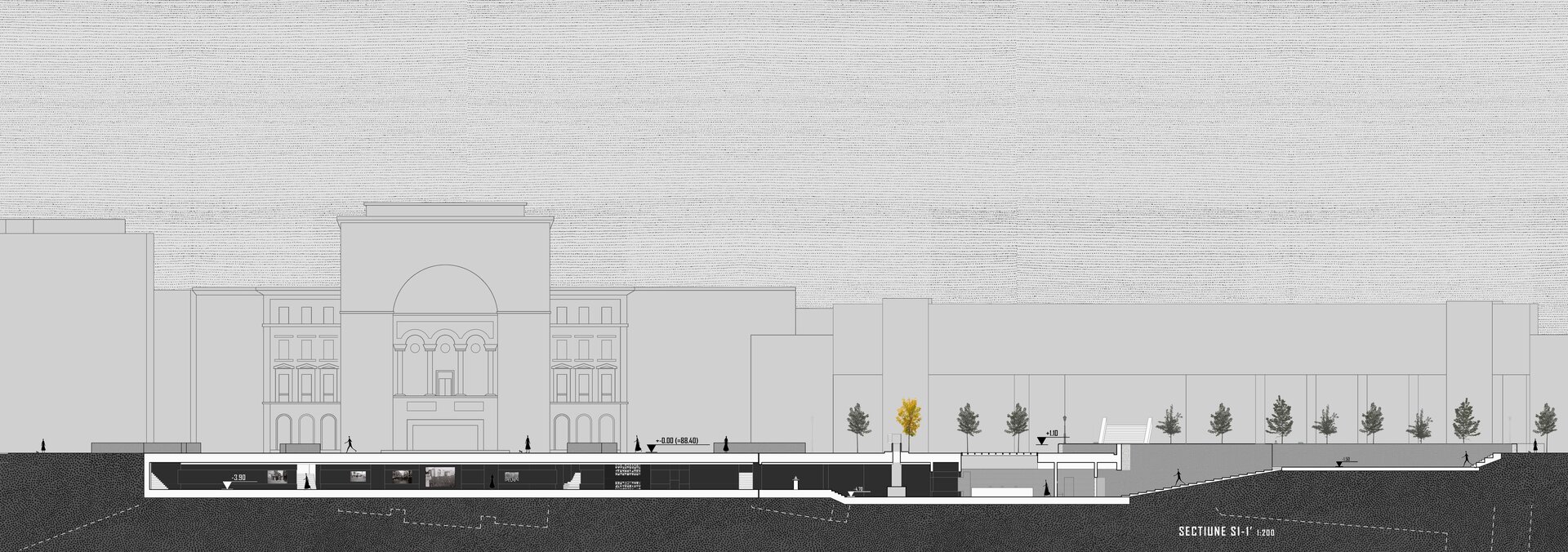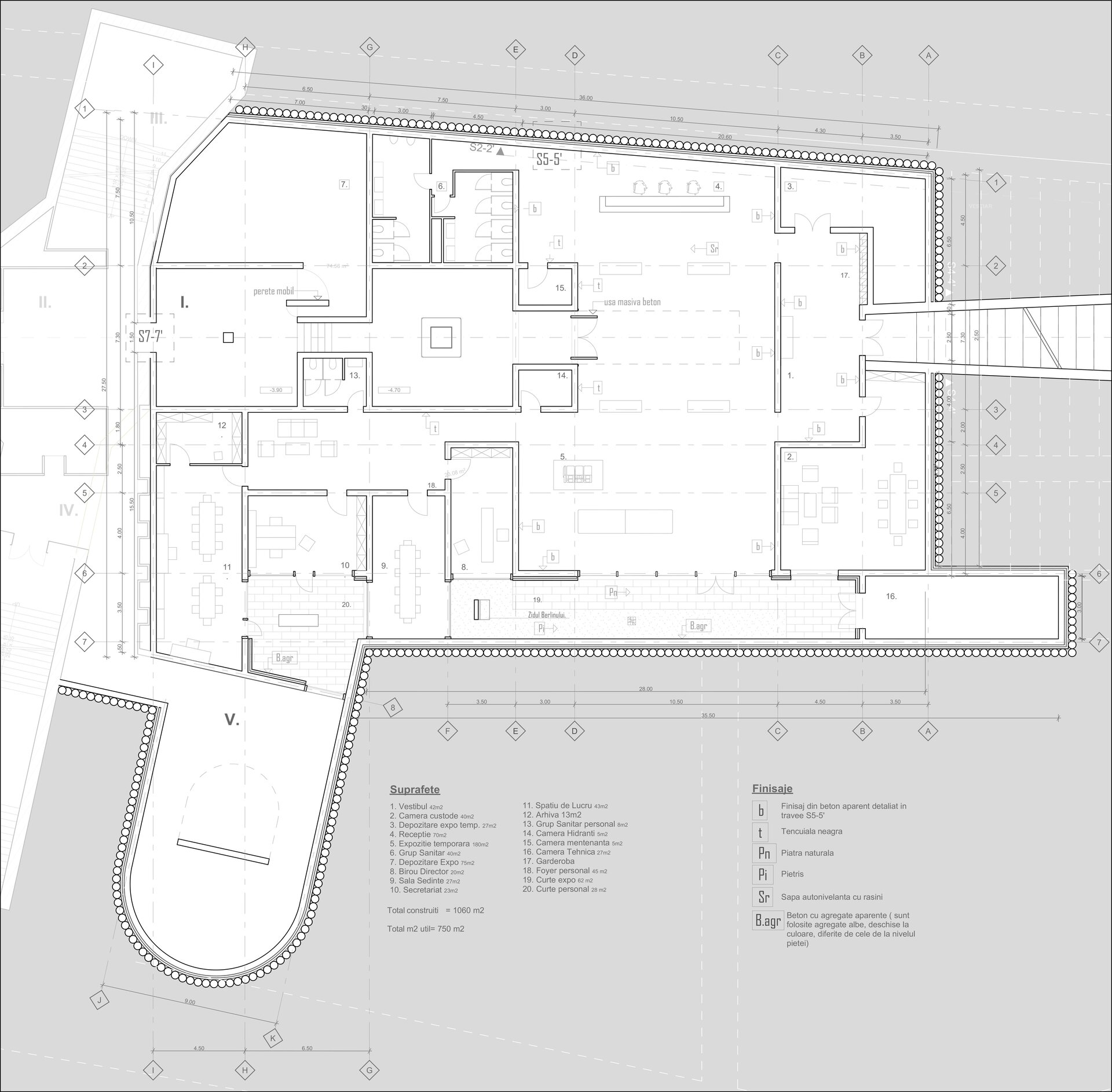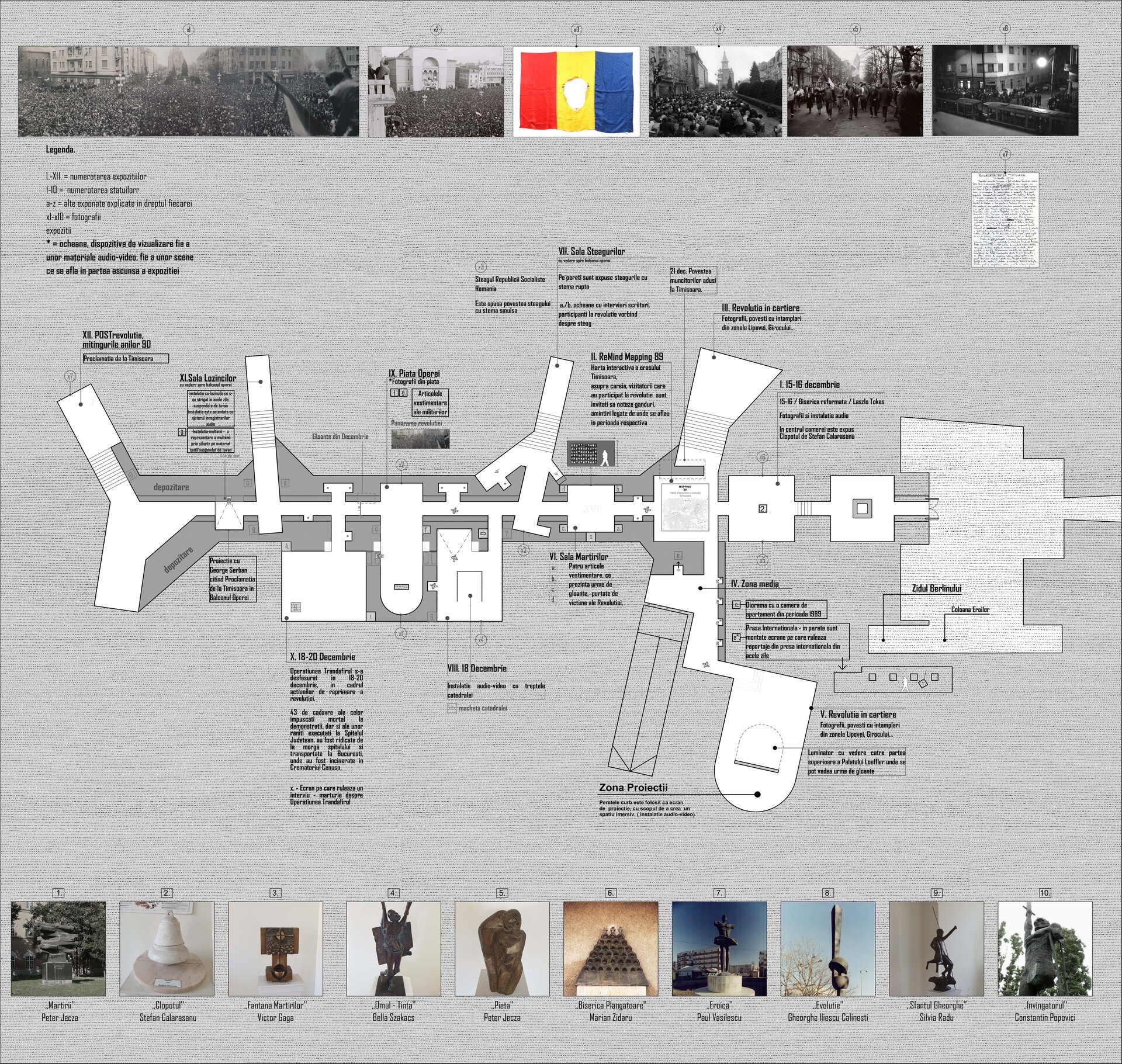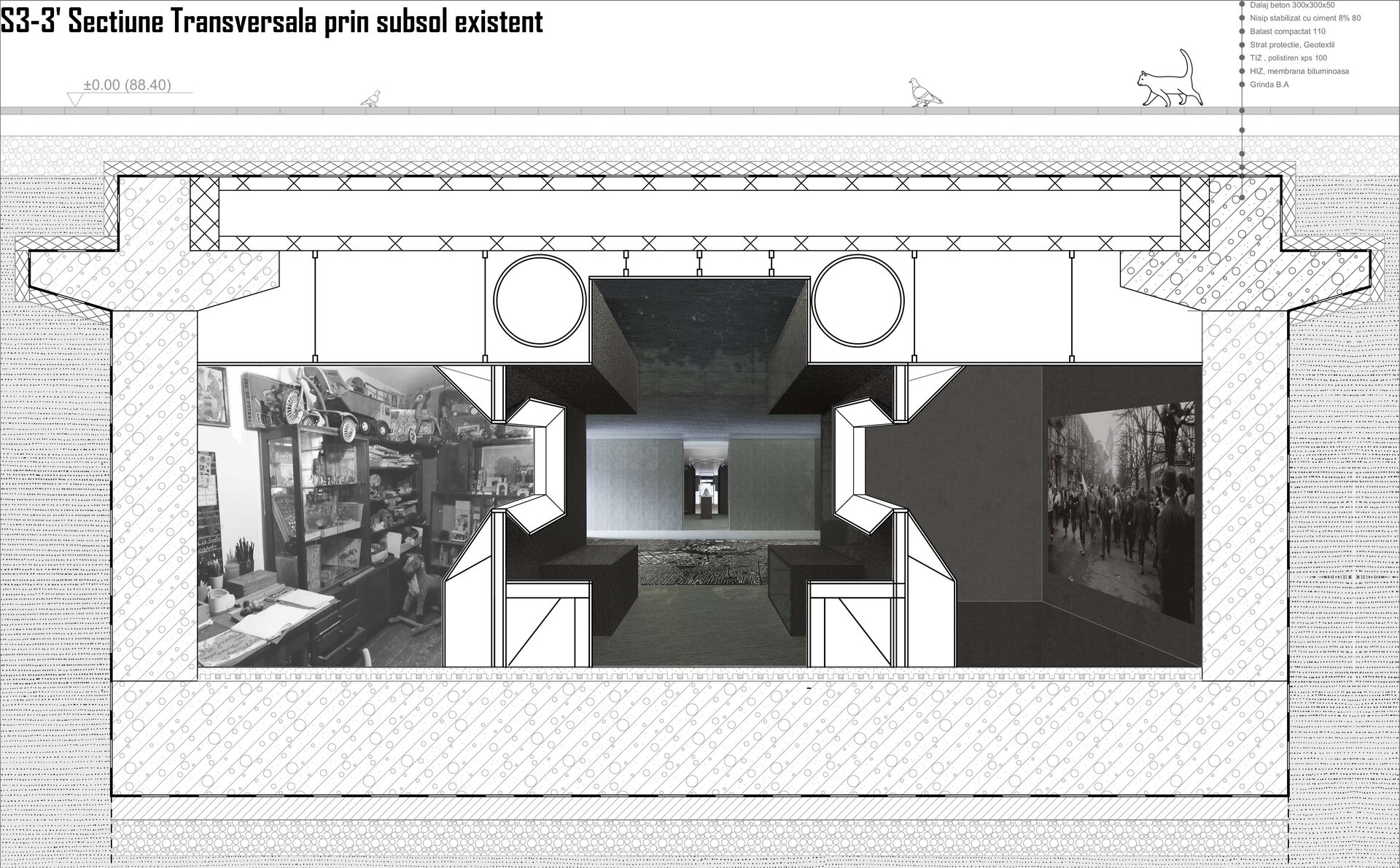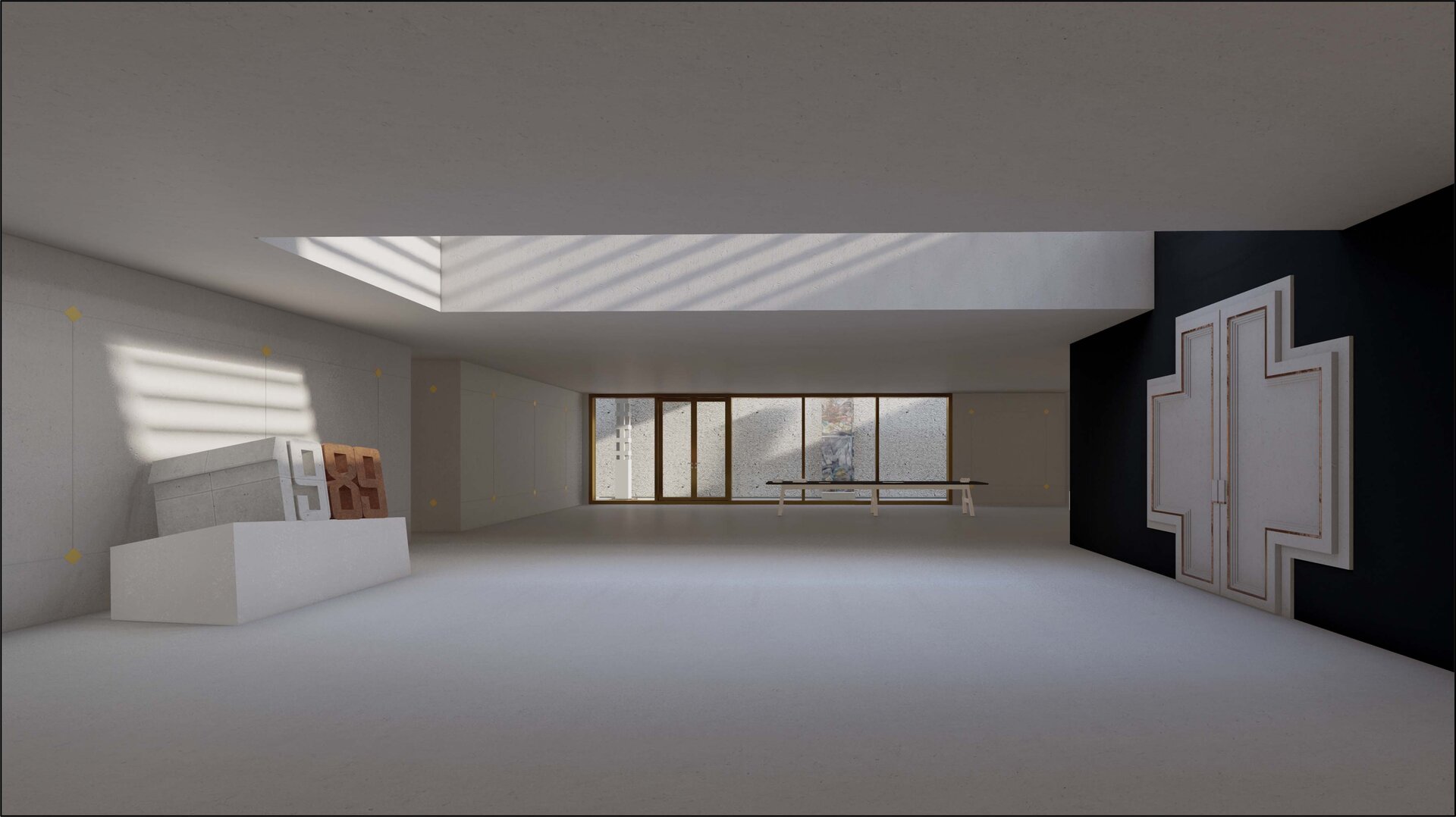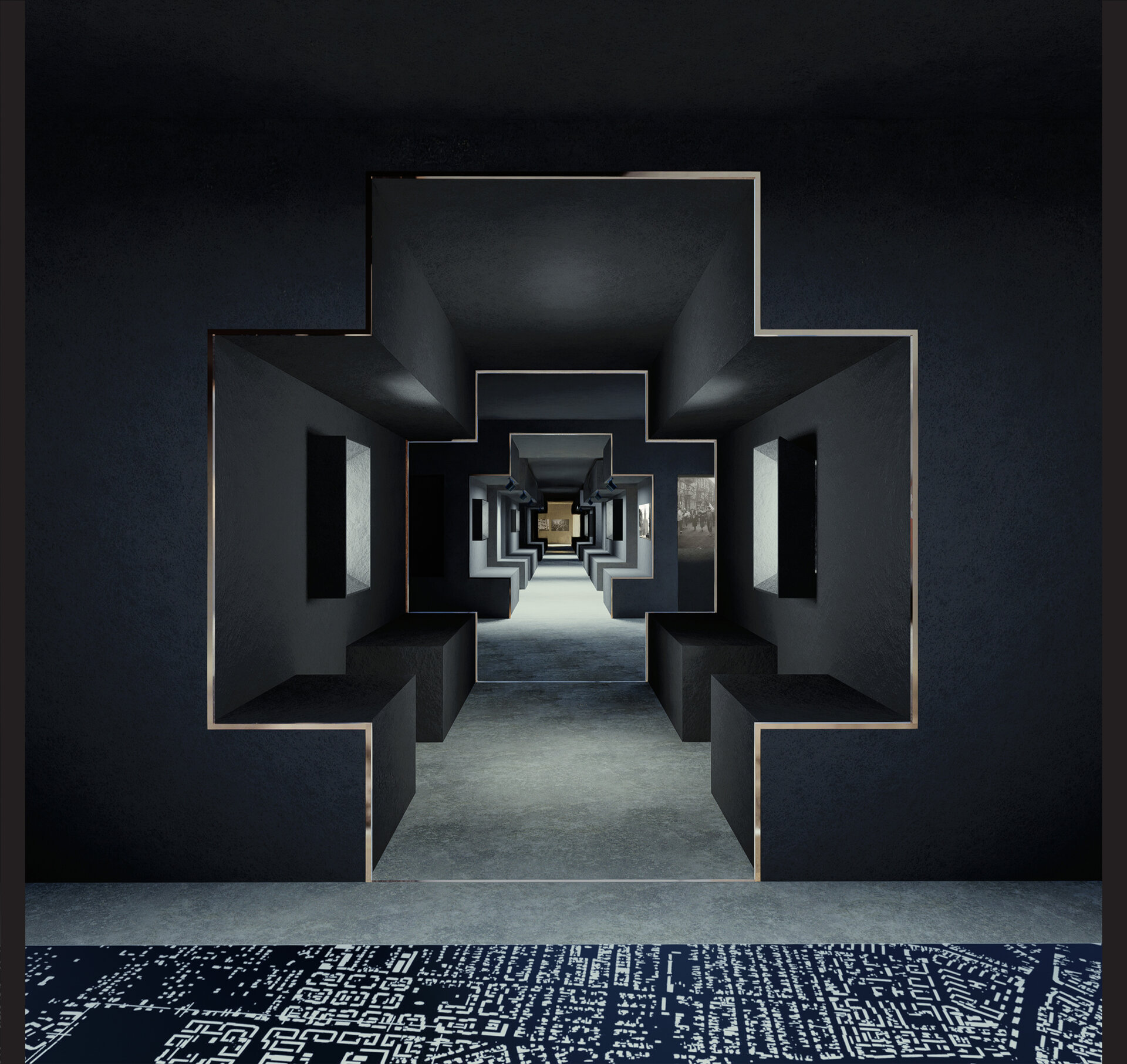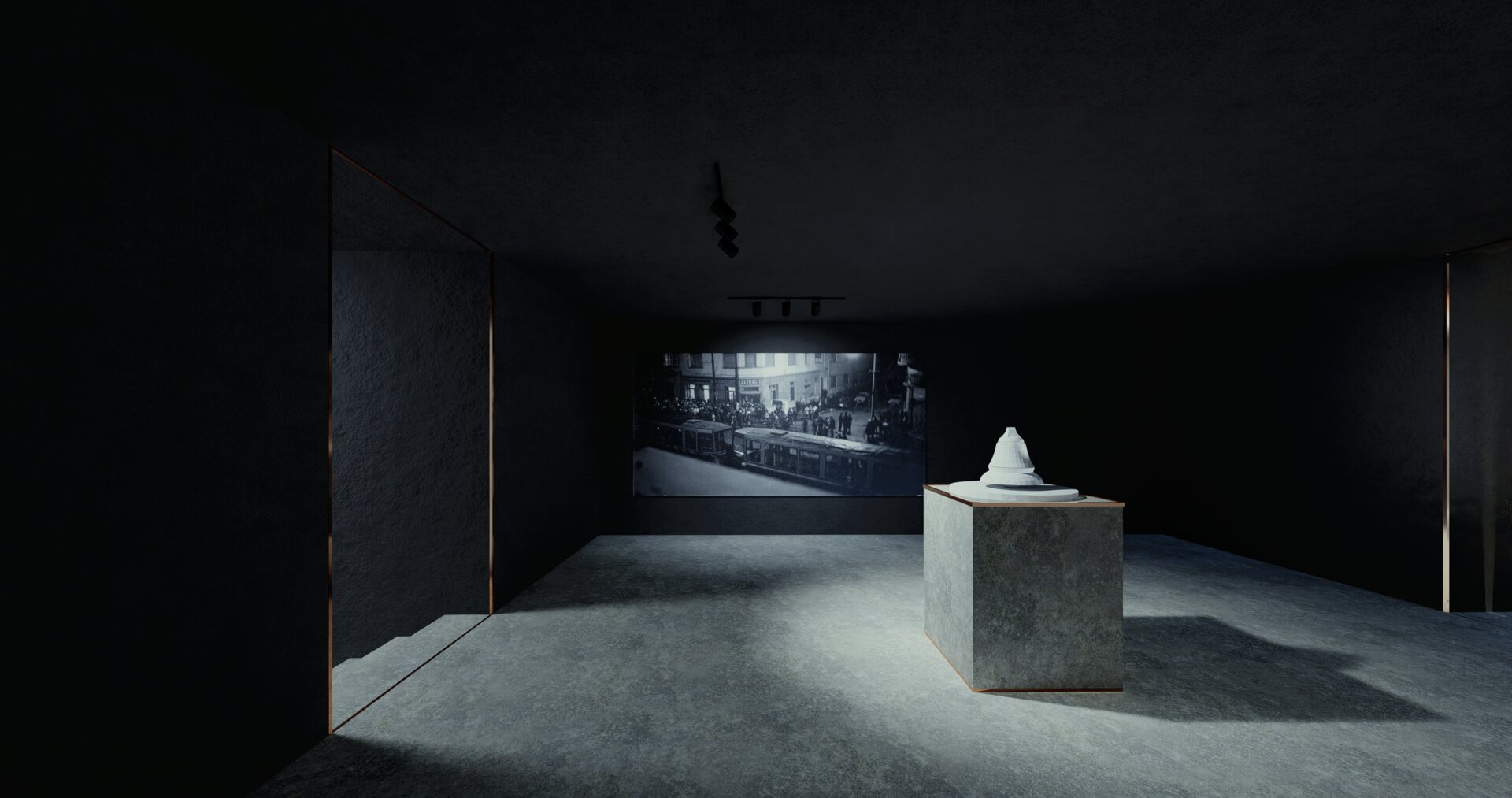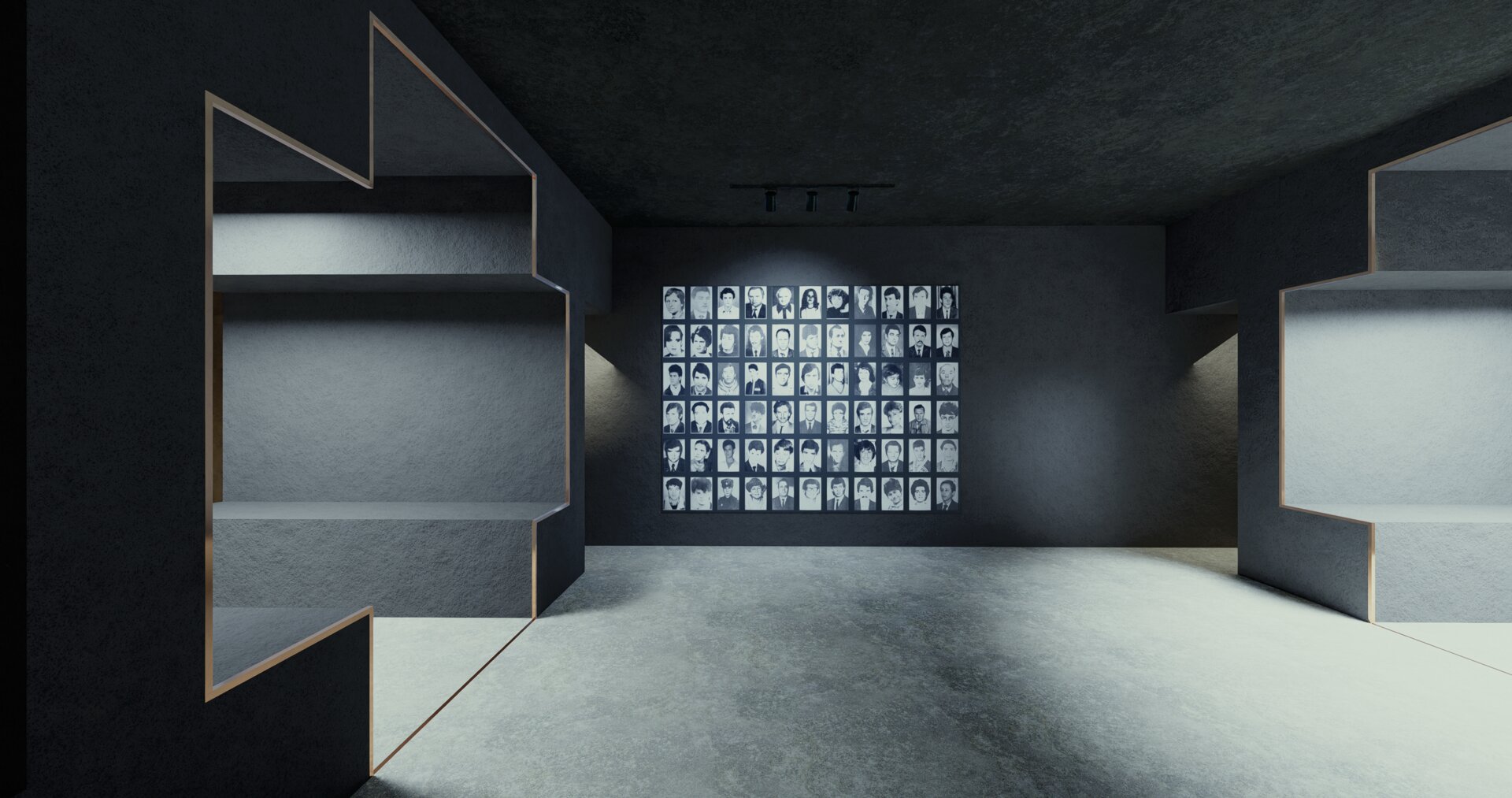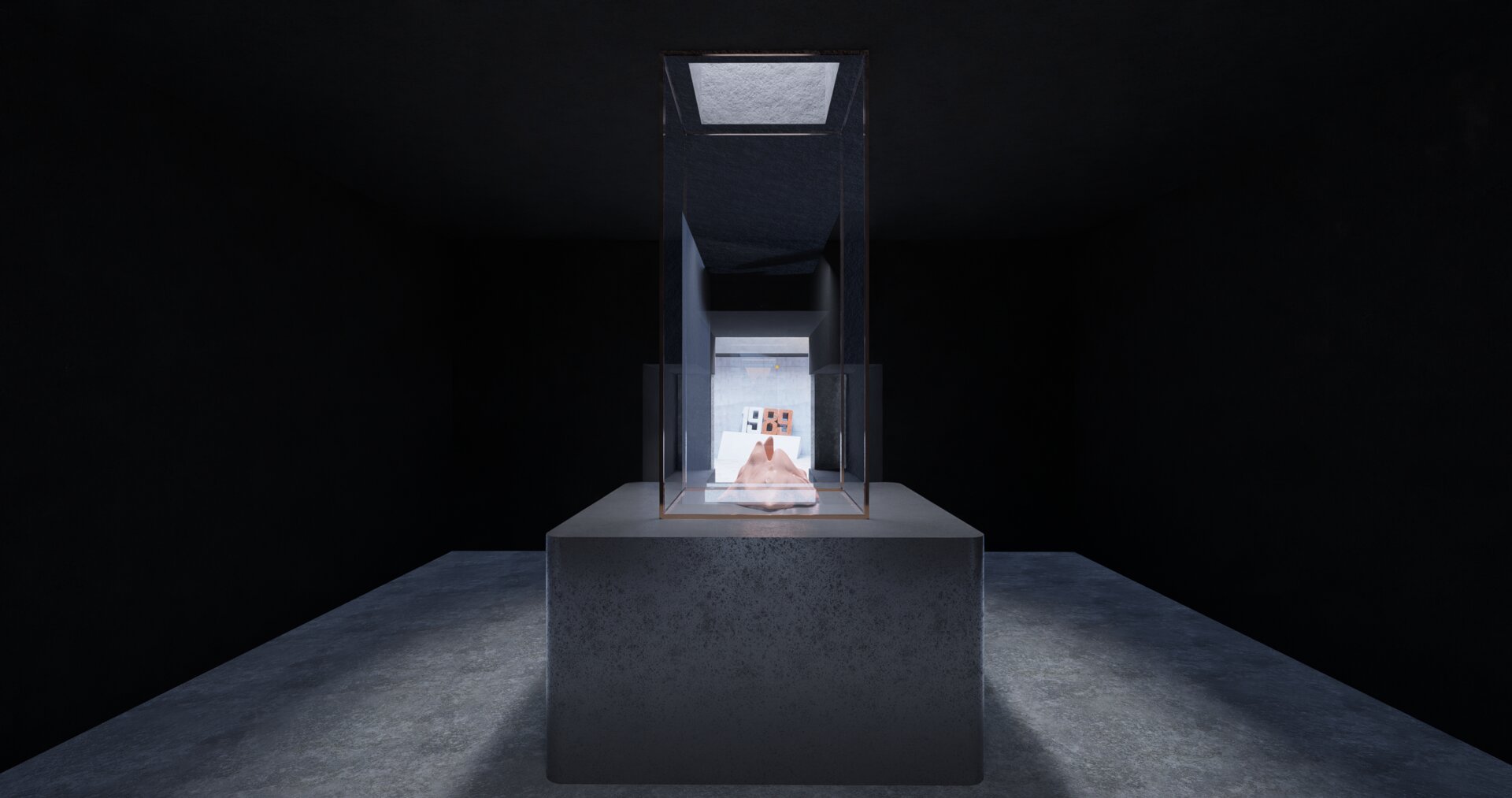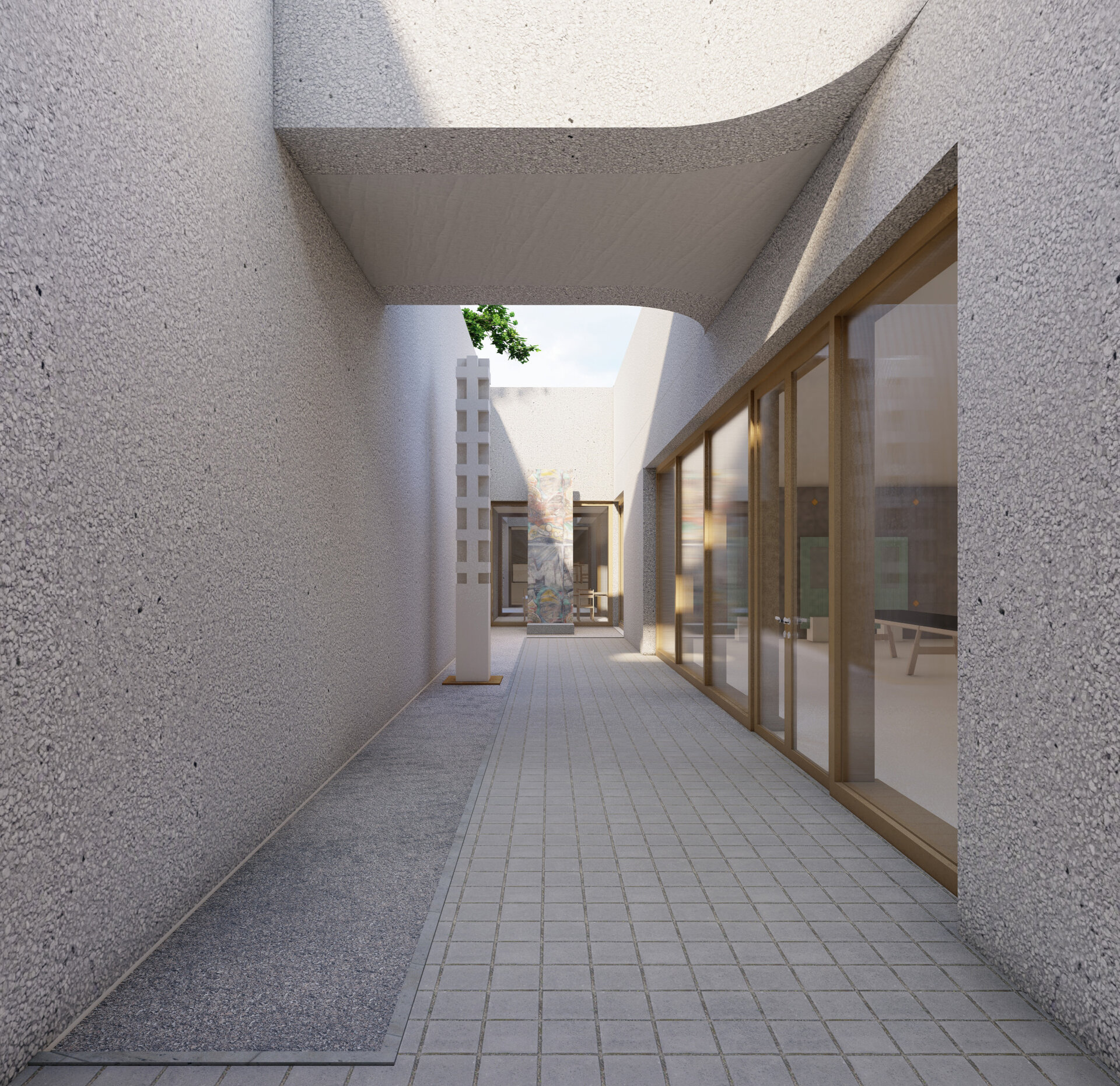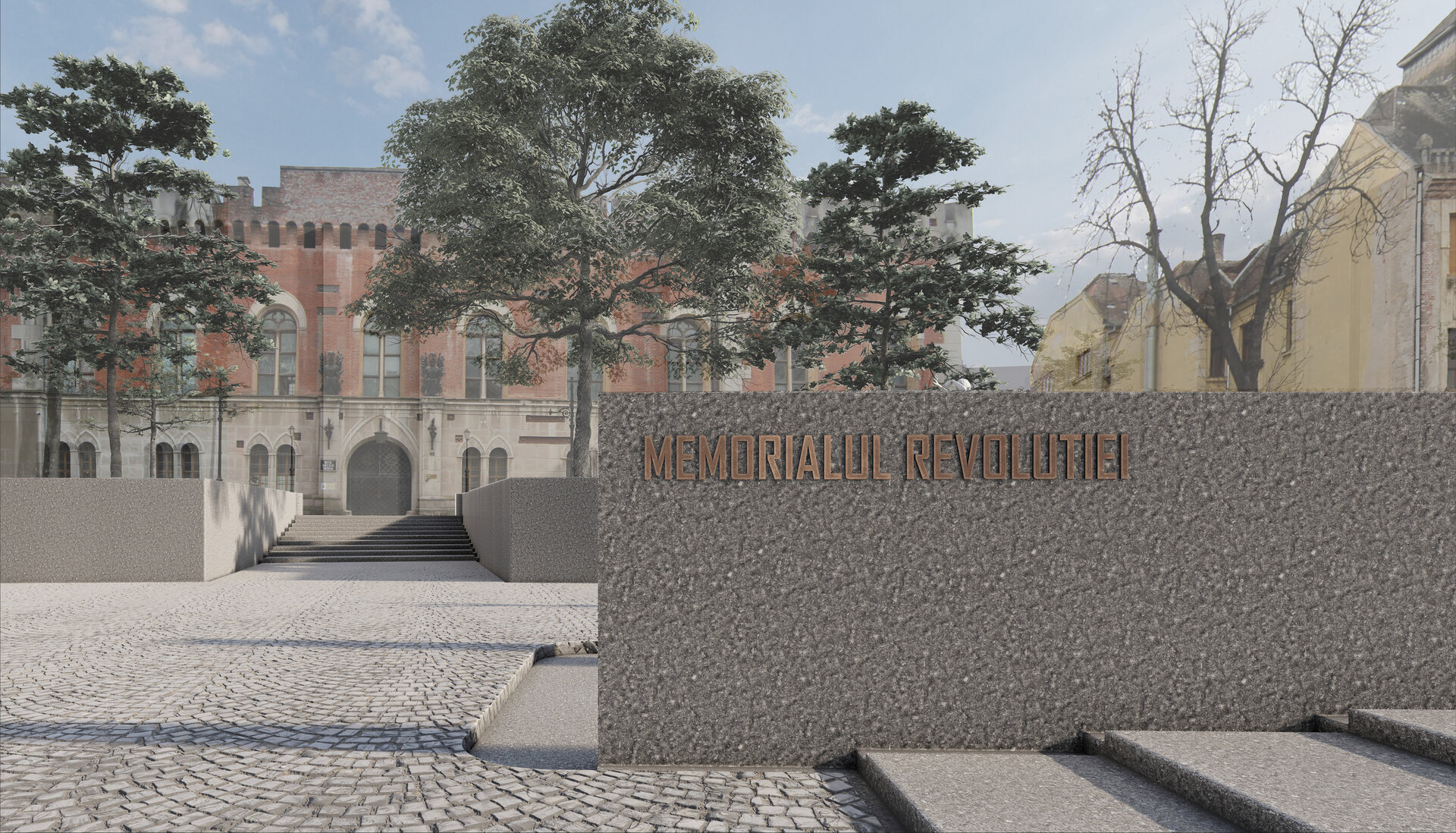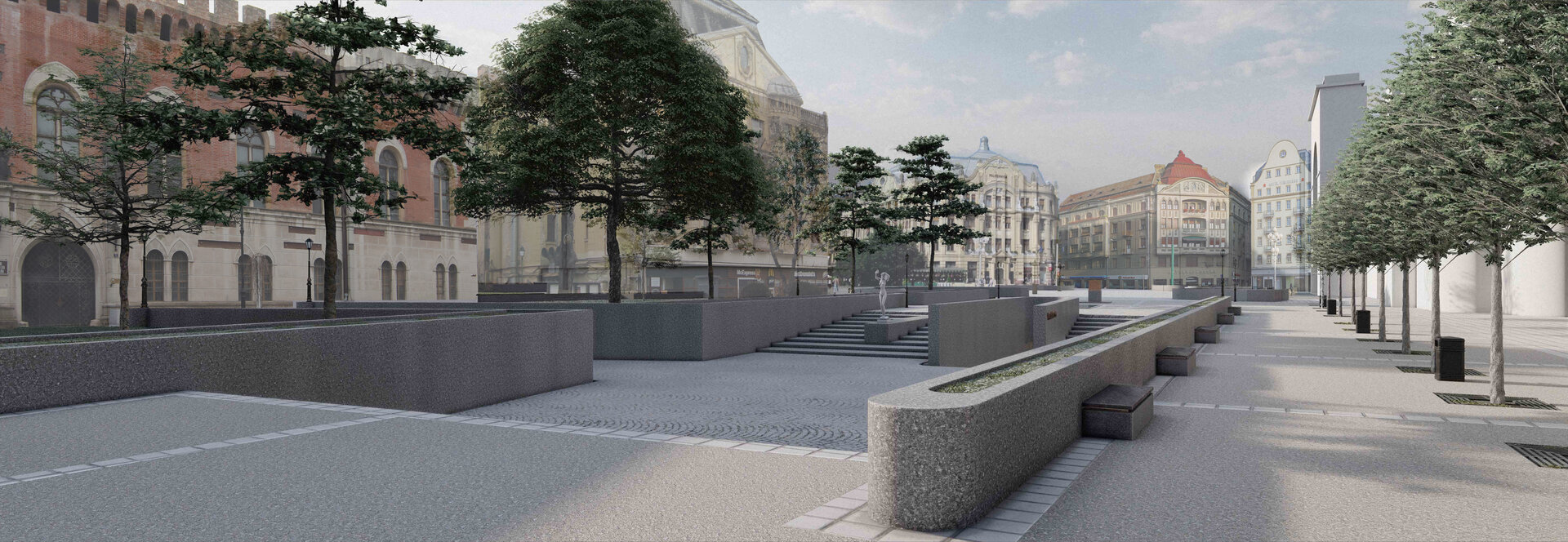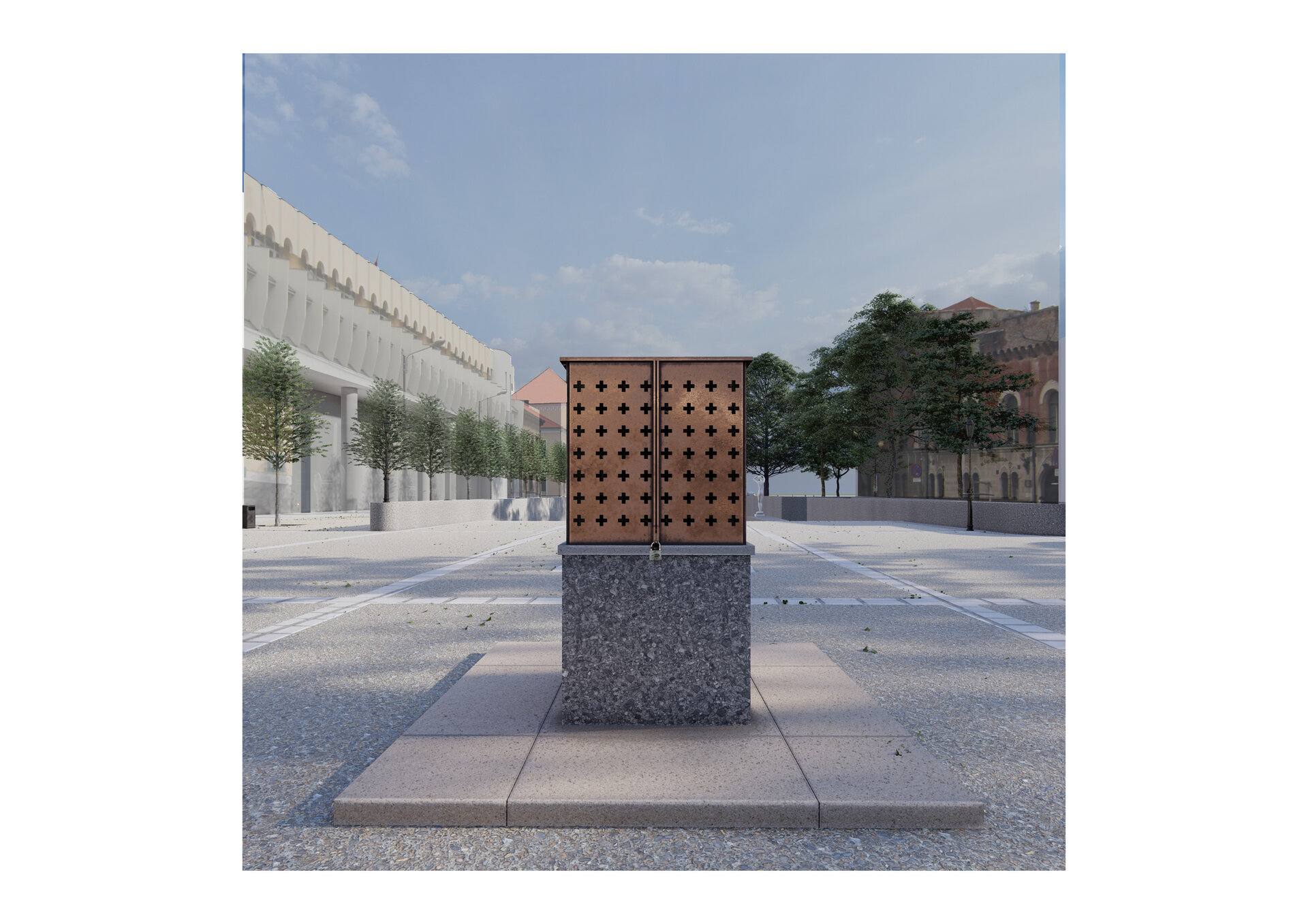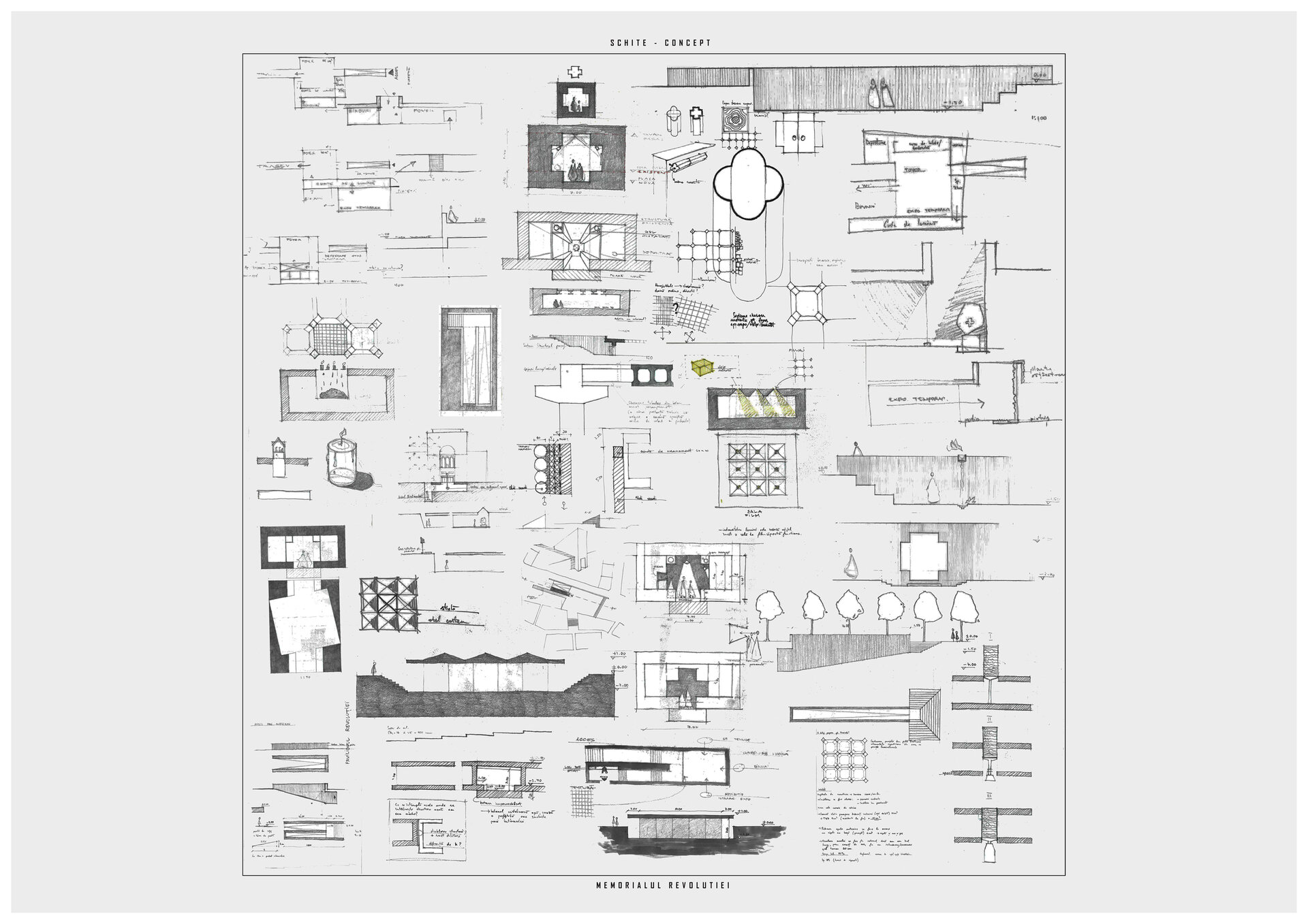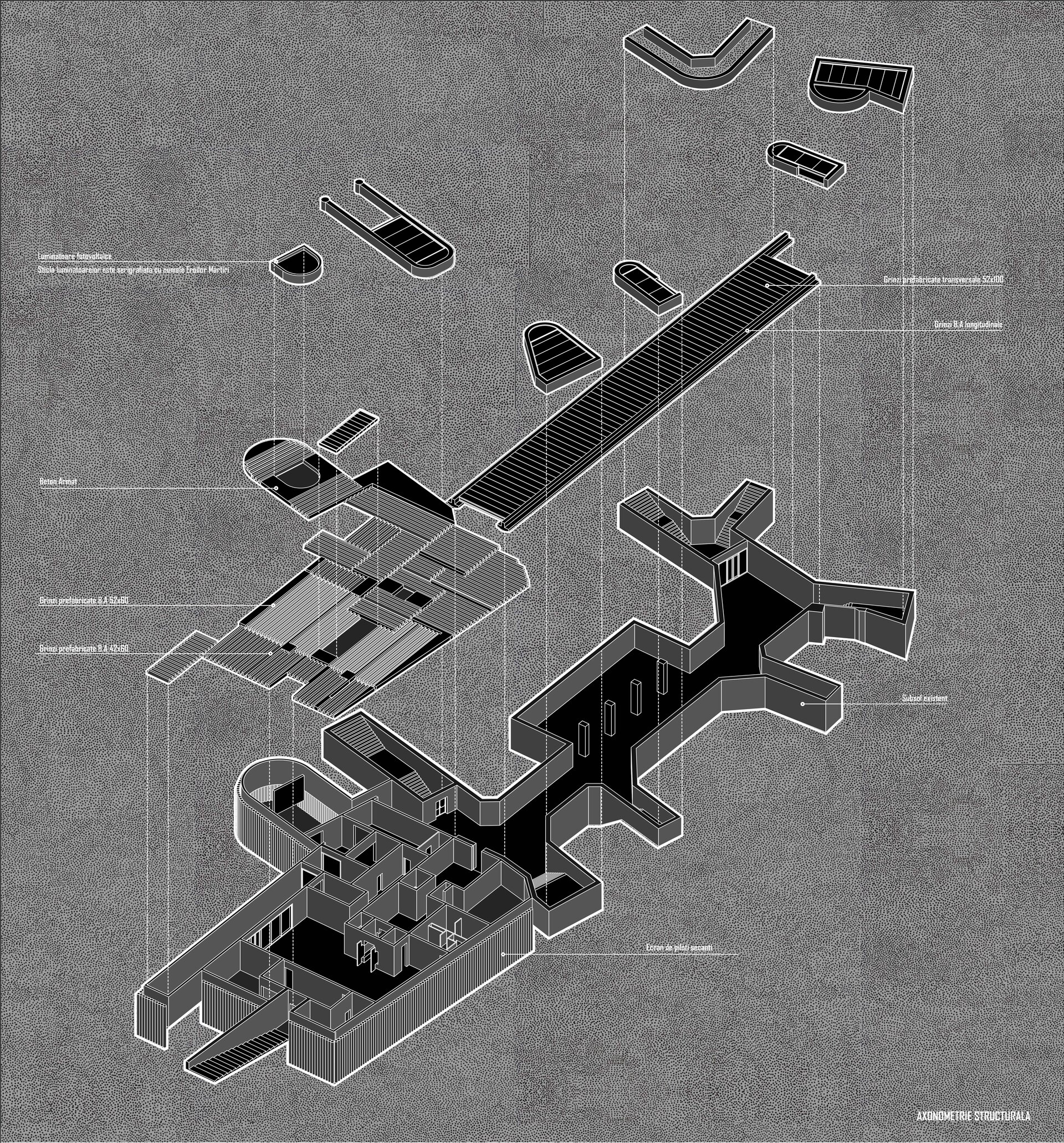
Revolution Memorial
Authors’ Comment
The project tackles two subjects in relation to the city of Timisoara. The first one has more of a symbolic nature, questioning the way in which we nowadays relate to the Romanian Revolution of 1989, more than 30 years after it happened. How do we commemorate this moment, where and through which means? The second subject focuses on the abandoned passageway found underneath Victoriei Square. The chosen site has a powerful symbolic connection to what the Romanian Revolution means. In December 1989, more than 100.000 people gathered there to win their freedom. Therefore, one of the premises of the project is to enhance the identity of this public space as liberty’s ground zero. At the same time, the project proposes the regaining of a central close-by public space, currently used as a parking space (the Modex parking). Moreover, it focuses on creating a strong connection between the urban area and the underground intervention. The strategy aims to transform the underground passageway into a museum area, to extend it (also underground) towards Ion Huniade Square and to rethink the Modex parking into a coherent urban space, given the existing context. This diploma is a scenographic project, but before anything is a public space project, with the subject of memory and the relation with the past.
The motivation behind the project was to generate an immersive space, a heterotopia (Foucault), where the visitor can have a one-on-one intimate experience with the project’s narrative. The architectural project is, before anything, a scenography that aims to create a specific atmosphere meant to serve as an environment in which the learning process can take place. The project narrative unfolds on a time-space axis, along which exhibition rooms emerge. There is a hidden side of the exhibition, inaccessible to the visitor, but visible throughout a series of viewfinders, screens and openings. This hidden part of the exhibition is made up of projections, interviews, dioramas and models, which aim to tell the narrative of the Revolution. Thus, through the curatorial project, the memorial is a reflexion of the way in which we discuss the events of 1989 today. The curatorial project is based off of the multiple voices technique in which the narrative present itself though the interviews and testimonies of the participants. The viewer finds himself in the dark, thinking of the events that happened right above their head 30 years ago, trying to grasp their meaning.
- Cultural Ensemble for the quarry-lakes of Jimbolia
- Human crematorium in Timisoara
- Earth research center. Sântana “Cetatea Veche” archeological site
- Ash - between spirit and matter - experimental area of culture
- Alternative Center for Performing Arts in Amsterdam’s Old Harbor
- Thermal Water Complex Baneasa Lake
- Dramatic Arts Centre on Luterana Street
- The Elisabeta Stirbey Institute - Choreography High school in Bucharest
- Center for treatment and relaxation. The revitalisation of Sărata Monteoru spa resort
- Workspaces on Luterană street - Bucharest
- Știrbei Vodă Housing
- Creating places in undesired spaces, Community Center in District 5, Bucharest
- Treatement, recovery and research center for mental disseas
- Revolution Memorial
- Old House - New House: The House of the Architect. Architecture Center in Constanța
- Emphasizing the local specific. Tourist retreat in the Apuseni Mountains
- Olympic Pool at Strandul Tineretului
- Conversion and extension of industrial heritage. Turda brewery factory
- The rehabilitation and extension of the Știrbei Palace in Bucharest. Relocation of the National Museum of Contemporary Art
- The conversion and extension of the Kretzulescu Ensemble from Campulung Muscel
- Center for education, research and exhibition of river navigation. Reconsideration of Valerianos & Lykiardopoulos Mill, Braila
- Hebrew Education and Culture center, Iași
- Interstitial space as an active element in theatre architecture. Extension of the National Theatre Radu Stanca, Sibiu
- Crheator Manufacturing Community Center
- Architecture Centre - Victoriei Avenue
- Loos Soup 2.0
- Intermediary gardens. SCDL (Research and development station for vegetables growing Buzău) modernization and transformation through Z Farming
- Multifunctional complex - Business center. Regeneration of industrial-port areas, Constanța Port, Constanța Area
- Invisible nature - Floreasca Lake. Architecture beyond the visual
- Educational center for music and choreography Calea Moșilor 132
- Faculty of textiles and fashion design. Conversion and expansion of the Lucchesi Factory in Prato
